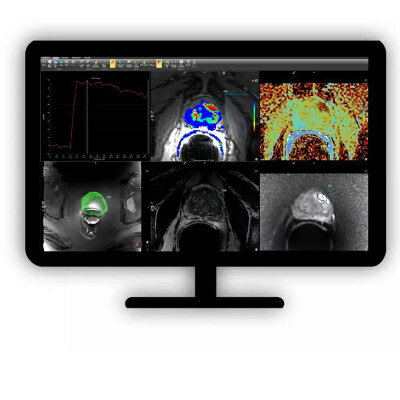Encouraging Results Reported from Study of Image-Guided Stereotactic Radiosurgery for Spine Metastases
By MedImaging International staff writers
Posted on 26 Oct 2011
Image-guided stereotactic radiosurgery (SRS) can be an effective and practicable approach for treating up to three spinal metastases, according to an international team of researchers reporting on the results of a recently concluded multi-institutional phase II trial. Posted on 26 Oct 2011
Samuel Ryu, MD, head of neuro- and spinal-oncology at the Henry Ford Health System (Detroit, MI, USA), who served as lead investigator for the trial, reported the results on October 5, 2011, at the 2011 annual meeting of the American Society for Radiation Oncology (ASTRO) in Miami Beach (FL, USA).
The goals of the phase II trial (RTOG 0631) were to study the emerging technique of spine radiosurgery within the cooperative group setting, and to demonstrate the technical feasibility of treating spinal metastases with image-guided stereotactic radiosurgery. “The message we get from the results of the phase II trial is that spine radiosurgery--despite its complexity--can be carried out successfully in the community hospital setting,” said Dr. Ryu.
The study enrolled 46 patients treated at sixteen institutions between August 2009 and March 2011. Each patient received a single SRS treatment of 16 Gy after their treatment plans were rapid-reviewed by the principle investigator to ensure that they met previously-agreed-upon standards for quality of tumor coverage and compliance with normal tissue dose constraints and delivery of image-guided radiosurgery treatment.
Rapid review findings showed that the treatment plans were optimal and acceptable in 100% of the patients. Spinal cord dose constraints were optimal for all patients (i.e., less than 10% of the spinal cord received 10 Gy of dose). Image-guidance treatment data showed optimal (91%) or acceptable (9%) compliance with preset parameters calling for less than 2 mm to 3 mm of difference between the target position at the time of treatment planning and the target position at the end of treatment.
According to the study protocol, earlier clinical experience with stereotactic radiosurgery for spinal metastasis has shown it to be effective for pain control and improvement of neurological function in patients with epidural compression. “As the technology for stereotactic radiosurgery becomes more widely available, we felt it was critical to study the emerging technique of spine radiosurgery in a phase II trial within a national cooperative group,” Dr. Ryu said. “On the basis of the phase II results we are proceeding with a planned RTOG 0631 phase III study, comparing the effectiveness of SRS with conventional external beam radiotherapy, in terms of pain relief and quality of life outcomes in 240 patients with spine metastasis.”
Related Links:
Henry Ford Health System














